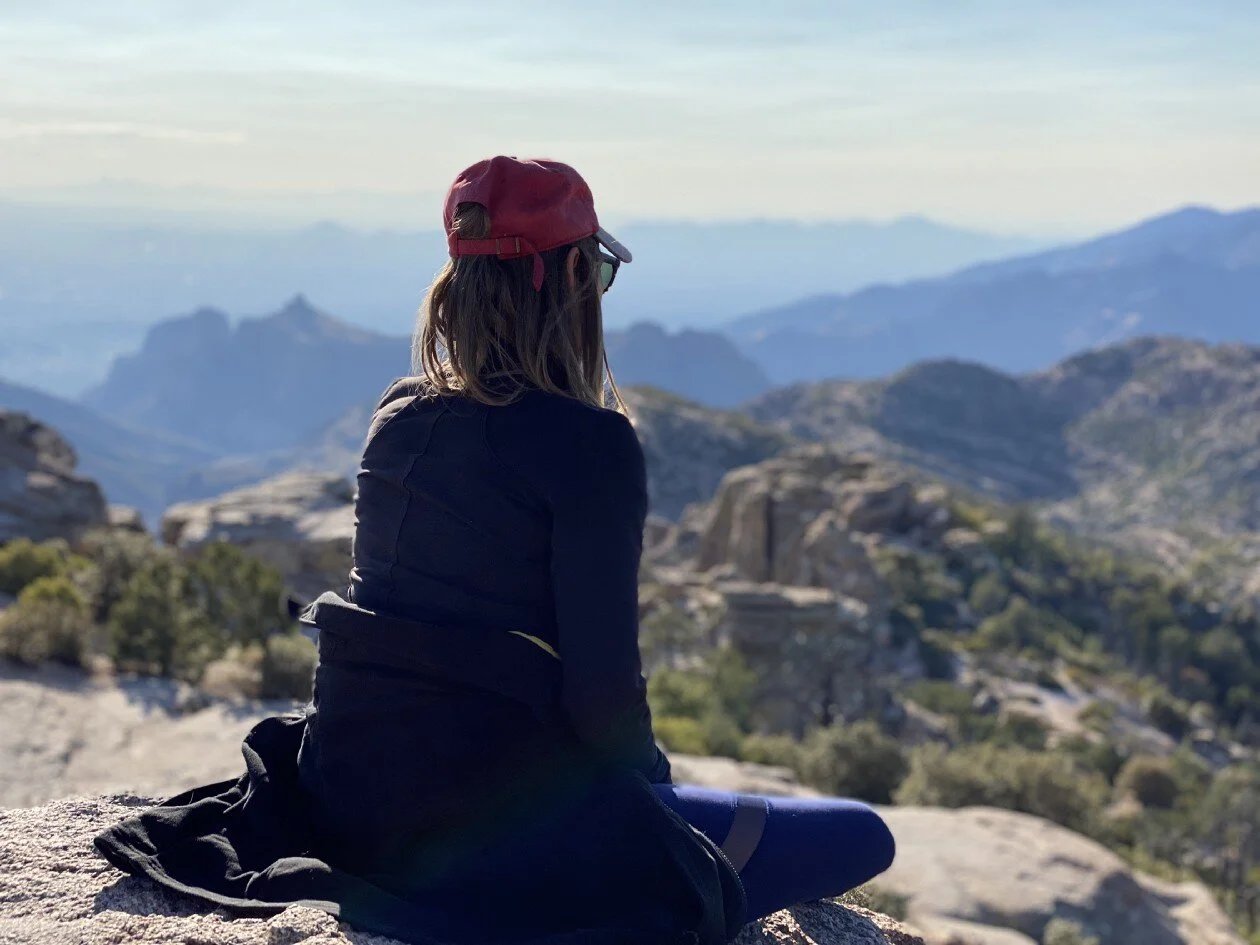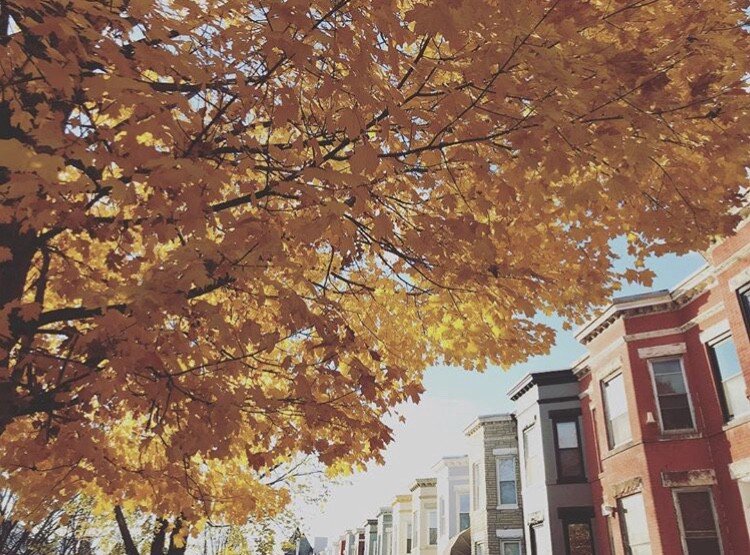Have I Been Paying Attention to Nature All Wrong?
Overlooking Mt. Lemmon (Arizona)
I recently got around to reading, How To Do Nothing: Resisting the Attention Economy by Jenny Odell. The book explores ways that humans can re-engage with the world around them, how to be a human in a body in a particular place (harder than you’d think), as well as what we stand to gain by spending more time with our thoughts. It’s given me a lot of framing for recent observations.
The first lesson here comes from the actual place where Odell sets much of her book: Oakland.
Lesson #1: Nature exists everywhere. You don’t have to go anywhere to “find it.”
As someone who recently was in Washington, D.C. for 13 years, and now am in Tucson, Arizona, this brought up a lot for me. When I decided I was going to move, there was a certain sense of dread that washed over. Rather than, “Have I done enough here?” the dominant question that plagued me was: “Have I been paying enough attention?” The main premise of this question is that I knew how different my new setting would be, and I might “miss” the chance to really “see” it again.
me, at Mount Lemmon in Arizona
So went my thinking: if I live someplace for a decade, I should be able to write an entire book of my observations. In fact, if I’ve been paying close enough attention, perhaps I wouldn’t even need that long. Alas, what I have found is that observation doesn’t start and stop at looking up and using my senses. It’s about a deeper, visceral connection, and an acknowledgement that I am part of the environment around: through my observations, yes, but also with my understanding of the natural world, and with my actions that affect it. Which brings me to…
Lesson #2: There is no true separation between humans and nature (just one we fabricate).
What stood out to me most are the ways that Odell unearths previously unappreciated aspects of her current environment, which happens to be a city. She does retreat on occasion to solitary surroundings (the forest, the desert), but even the concept of “solitude” is called into question, because how can one be alone among the plants and animals?
Instead, she traces sources of water and lurks in the concrete underbelly of Oakland, where the roots of trees have taken hold in spite of human presence. In other words, there is no separation. It is not about: “Here I am on this city street, not in nature” and then, “Here I am in a park, in nature.” Instead, it is merely a matter of observing nature’s ever-presence no matter where you are.
Lesson #3: Having a muse is helpful, but as soon as I chose a “muse” in nature, I found that my muse evolved.
All September-long before I left D.C., I kept a list of observations. Where Odell is fascinated by birds, I am drawn to their real estate: the trees. We have some incredible trees and shady streets to enjoy them under: sycamore, oak, elm, beech, tupelo. But how frequently did I address them? I appreciated them, but it was quite like trying to be in a relationship with someone who speaks a foreign language just because they’re cute. Sure, I could look at their face all day, appreciate the way the interesting-seeming words came out, pick up their emotions and understand a few things based on context, but could I really love someone if I never made an effort to understand their language, or even learn their name?
That month, I mourned for the bold oak trees whose roots had impressively cracked and lifted the sidewalks of Rhode Island Avenue. They were cut down, which I realize was for legitimate urban maintenance. But it made me sad. Honestly, they could have been dead. I know so little about trees (this made me sad, too.)
Bloomingdale neighborhood of Washington, D.C.
Yet, in this last ditch observational quest to “notice nature” (again: creating a meaningless separation), I found that my notes favored the human element — the homo sapiens who had made their home amid the concrete being invaded by the tree roots. Here is one unedited excerpt transcribed from my Notes app:
A group of people holding hands in a circle by Vermont Ave, appearing to pray
A bus driver, looking out the window at a man on the street, as they exchange what must be an inside joke, giddily laughing
The guy who sits in Logan Circle every day writing on his laptop with his chocolate lab
Eon, the cafeteria server from Guyana who jokes with me about my predictable breakfast oats and lunch soup order (he’s worked here 36 years)
A man on his bike playing a stereo (Neil Young — “Heart of Gold”) with a sign that says, “Yahweh is come.”
A man with long, brown curly hair sitting under a tree by the Carter G. Woodson statue, meditating on a Thursday morning
Lesson #4: I can narrow the gap between myself and the natural world when I see how much I reflect it.
One who has never visited there and paid attention long enough might find D.C. to be a corrupt swamp devoid of spirit. But in fact, just like trees that grow through pavement, a certain spirit is borne from a place of survival, from a place where spirit is snuffed out in favor of politics and capital. In D.C, an Act of Congress commands the skyline’s highest point, but in the underbelly of the city, activism is propelled in abundant mission-driven organizations, churches, synagogues, mosques, and yoga communities. Its northeastern border is defined by a river named (in an anglicized version) of the native tribe who lived there prior to the 17th century, when it was destroyed and killed off by English settlers. In a tragic, persistent metaphor for a bleak past that persists today, that river is incredibly polluted. However, efforts are rapidly being made to clean it up. Certainly, you cannot pave over history and pretend it never happened, but you can acknowledge and tell the stories of what came before. And, you can try to do better going forward.
Speaking of, Odell argues that as humans, one of the best ways we can work through the challenges that plague us is by organizing one on one, and then in smaller groups, and increasingly larger (quite like a tree developing its roots system). This is the kind of work that attracts people to Washington, D.C. Human organization and activation thrives there by design.
Lesson #5: It requires intentional research. It means learning the native history, the geology, the plant names, and animal behavior.
Hike in Santa Catalina State Park, Arizona (Romero Canyon trail)
In Tucson, you are dwarfed by the mountains. Depending on your visible horizon line, you will be embraced by some combination of the Santa Catalinas to the northeast, the Rincons to the east, and the Santa Ritas to the south. While on Tumamoc Hill the other day, I couldn’t help but imagine what this might do to the human psyche, to be visibly humbled not by a structure that took man 30 years to build, but rather by a structure that formed over 30 million years. I might have wandered on without learning the name of the tree that is everywhere here, if not for a reminder from a fellow student in my writing class. She had written a poem about the velvet mesquite, who can often serve as a nurse tree to the great Sagauro cactus. Now, after hearing her poem, I’ll never be able to look at these two plants the same way again. Now the human condition itself is forever mixed up with a previously nameless plant. Perhaps one day in ten years, while talking to a friend who is frustrated by her teenage child, I will think of the mesquite and the saguaro and feel that familiar, prickly heat at the corners of my eyes.
Hike in Santa Catalina State Park, Arizona (Romero Canyon trail)
If you want to be more intentional about it, there are two things you can do:
If you don’t already know, visit this website to learn about the history of the native land where you currently call home.
Download the iNaturalist app on your phone. You can look up the flora and fauna that you find, and use it to feel a little more connected to the explorers (humans) in your own community.
Lesson #6: I have to let the process unfold over time, and live in the questions if needed.
The hard, angry-looking exterior of a desert plant comes from scarcity and survival, quite like one might find the tough exterior of an east coaster with a mortgage and day care bills and a company restructuring looming and…you get the idea. Embarrassingly, for as long as I lived in D.C., I didn’t learn a single next-door neighbor’s name. After a week here in Tucson, my neighbors had me watering their garden while they went out of town. Is this coincidence, or intentionality? Or, perhaps, a result of the environment itself?
Alas, I am drawing these comparisons between two arbitrary places, but they are meant to serve merely as example. What they’ve helped me see is that we clearly have much more in common with the natural world than we’d notice by simply passing by, or even by observing with affection. You have to look deeper, look stuff up, ask questions. This is what happens when we take the time to linger on the world around. And it doesn’t have to be any particular sort of place, just the place that we happen to be in that moment. I feel so fortunate to have the chance to do this somewhere new, but what I am realizing is that you need not change your scenery.
In fact, it may be that lingering in one place for much longer is in fact the ticket to the deepest and most meaningful understanding yet.



